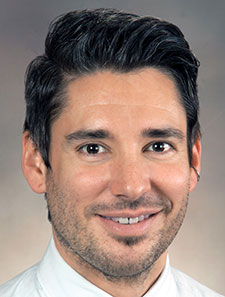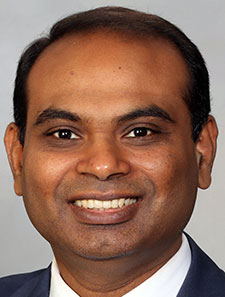 Transfer of patients between hospitals has long been a part of hospitalist life, and most hospitalists can recall any number of challenging situations. Driven by a desire to improve these situations and help patients in need of transfer, hospitals are actively examining their practices and making changes for the better. SHM has a special interest group (SIG) for interhospital transfers and has included more transfer medicine-related content in national meetings. This article summarizes a high-yield session from Converge 2024 related to interhospital transfer best practices.
Transfer of patients between hospitals has long been a part of hospitalist life, and most hospitalists can recall any number of challenging situations. Driven by a desire to improve these situations and help patients in need of transfer, hospitals are actively examining their practices and making changes for the better. SHM has a special interest group (SIG) for interhospital transfers and has included more transfer medicine-related content in national meetings. This article summarizes a high-yield session from Converge 2024 related to interhospital transfer best practices.
Patient transfers between healthcare facilities or hospitals occur for several reasons, including the need for specialized capabilities unavailable at the referring facility, and temporary lack of bed or staff capacity. Owing to increased procedural specialization as well as inpatient capacity challenges nationwide, the need for patient transfers across healthcare facilities has increased, and with it the need for established best practices and more efficient transfer models. As the demand for interhospital transfers rises, we highlight the need for a new sub-branch of medicine coined “transfer medicine” by the SHM Interhospital Transfer SIG. Transfer medicine includes the study of inpatient transfer processes and infrastructure, with a focus on standardization, quality improvement, and outcomes. Widespread implementation of best practices can significantly improve efficiency, resource utilization, quality of interhospital transfers, and patient safety.
We focus on structured processes, dedicated workforce roles, and patient-centered care pathways, so that healthcare systems can better manage the increasing patient transfer demand and ensure optimal patient outcomes. Continuous evaluation and adaptation of these practices are essential to meet the changing needs of healthcare systems. Based on our experiences in triage roles, we highlight five best practices related to patient transfers.
1. Transfer intake
Transfer calls are frequently chaotic or conducted under temporal duress, creating high-stress situations where the risk of human error is elevated. A well-designed transfer intake documentation template acts as a checklist, ensuring that no critical information is overlooked.
A. Standardized intake (form or template or questionnaire)—a standardized template is essential to identify the need for transfer, assess patient stability, and ensure a smooth handoff. Different health systems may have roles besides physicians to capture some of the standardized information, but important information includes:
-
- Demographics, referring location, callback number and name
- Reason for transfer
- If the transfer is for a procedure or specialist consultation, confirmation if and when the service is available can be helpful, to avoid unnecessary transfers and arrange transfers to align with specialist or procedure availability
- Health information (medical history, labs, imaging)
- Most appropriate receiving system facility, care level, and bed level
- Transportation plans and timing
B. Medical information—one of the key roles for the hospitalist during times of transfer is to quickly ascertain and summarize the important facts of the patient’s condition so that receiving teams have concrete information to initiate care upon arrival. This is particularly important when records from the referring hospital do not accompany the patient. While a detailed history may not be practical, targeted medical information helps to minimize errors and promote safety. This should include code status, medical interventions performed at the referring facility, ongoing anticipated medical needs, medical stability, and transportation plans. If there is a change in clinical status while awaiting patient transfer following acceptance, communication from the referring facility is encouraged. Finally, clear communication helps hospitalists ensure patient transfers benefit the patient, while also supporting colleagues at other hospitals.
C. Recorded phone lines—due to the potential for risk management and regulatory concerns, recorded phone lines should be a standard feature in facilities that regularly accept transfers. Recorded lines establish an accurate record of conversations made during the transfer process, which can later be used for feedback, case review, quality improvement, and orientation. Additionally, they offer a layer of protection in case of disputes or misunderstandings, ensuring that all parties have access to a clear record of what was discussed and agreed upon while regulatory or professionalism concerns are adjudicated.
2. EMTALA and patient transfers
The Emergency Medical Treatment and Labor Act (EMTALA) applies to all patient transfer requests originating from an emergency department, however, it is not applicable if the patient is located elsewhere (e.g., admitted in the hospital, from a nursing home, or clinic). EMTALA is also not applicable when there is no capacity (bed or service) available at the accepting facility during the time of intake. Understanding the nuances of EMTALA is crucial for healthcare providers to remain compliant and avoid legal repercussions or penalties.
When the accepting facility has both the capability and capacity to care for the potential transfer patient, EMTALA guidelines must be followed. Importantly, insurance should not be discussed for EMTALA-related transfers as insurance type should not be factored into medical decision making. In contrast, insurance may be reviewed for non-EMTALA transfers. This distinction is vital, to ensure that patient care is not delayed or compromised due to administrative issues. It also highlights the importance of having clear protocols in place to manage capacity issues efficiently.
3. Triage clinicians
Triage clinicians are a group of clinicians (either physicians or advanced practice practitioners) who serve in roles that process patient transfer-related calls and perform triage. Establishing a trained cohort of triage clinicians facilitates standard work and higher transfer quality.
A. Roles and responsibilities—triage clinician responsibilities may vary among institutions and should be based on workload and triage call volumes. If volumes are high, the triage function can’t be done well by a person with other obligations (i.e., during rounding or direct patient care). By clearly defining roles and responsibilities, healthcare facilities can ensure that triage clinicians are well-equipped to handle the demands of their job efficiently.
B. Triage lists—serve as helpful tools for patient review and can streamline the transfer process when multiple patients are accepted and awaiting transfer. These lists, along with standardized triage algorithms, reduce variability in decision-making, ensuring that all patients are prioritized according to medical needs and receive equitable, timely care. Regular reviews and updates of these protocols are necessary to adapt to changing healthcare resources and dynamics in each organization. A time-stamped handoff column or text box ensures that medical information for waitlisted patients is updated and on hand for triage decisions.
C. Core group—a dedicated group of triage clinicians can maximize the safety and efficiency of transfers. The characteristics of successful triage clinicians include strong clinical acumen, excellent communication skills, high emotional intelligence, organizational skills, and the ability to make decisions regarding ambiguous clinical scenarios. The selection of a smaller cohort results in greater transfer medicine exposure and, in turn, more systems knowledge. Many transfer requests are managed through creative solutions, which are easier to execute with experience and facility with hospital and clinic infrastructure.
D. Regular touchpoints—ensure continuous improvement and address any system or process-related issues. These touchpoints should include case reviews, discussion of new workflows, and group feedback sessions that preserve and promote group triage expertise.
E. Quality review—regular review of patient-related outcomes, professionalism, and EMTALA compliance is essential to safe and appropriate patient transfers. It fosters a culture of accountability and transparency, encouraging healthcare providers to adhere to best practices and strive for excellence in patient care. A developing skill is the identification of transfers that could have been avoided with extra communication and coordination. This involves recognizing that interhospital transfer comes with significant risks and, when able, finding patient-centric alternatives to transfer, like expedited outpatient follow-up or procedure-only transfers, which can be safer and more efficient options.
Transfer center versus command center
Based on the specific needs of the organization and its resources available to allocate towards efficient patient transfers, a transfer center or command center can be set up. Transfer centers typically focus on coordinating patient transfers, while command centers have a broader scope, including staffing allocation, hospital throughput, and discharge processes. Usually, transfer centers are embedded within the command centers. Each model has its own purposes, advantages, and resource needs, and the choice should be based on the facility’s goals and capabilities. For further reading regarding the command-center concept, please see the excellent reviews recently published regarding command centers.1,2
A. Regional transfer center coordinators or state capacity coordinators—play a crucial role in facilitating patient placement within the region or state. They function as liaisons between referring and accepting facilities to place patients in the most appropriate setting for their care needs. Many of these started during the COVID-19 pandemic, but only a few states have ongoing regional transfer centers. Others activate these centers during emergencies or crises. This flexibility allows for a rapid and coordinated response to surges in patient volume, ensuring that resources are allocated efficiently and patient care is not compromised. These functions are typically only possible with the help of local or state governmental involvement—given the nature of the American healthcare system—but offer tremendous potential for patients when placement in an appropriate hospital is challenging due to region-wide capacity challenges.
Innovative pathways for capacity optimization
A. Procedure-only transfers—procedure-only transfers involve the transfer of a patient from the referring facility to an accepting facility for a specific, time-sensitive procedure that is unavailable at the referring facility, without the use of an inpatient bed at the procedural hospital. After the procedure, the patient returns to the referring facility, where they remain in inpatient status throughout the entire process. This model allows for expedited access to specialized care without the need for prolonged stays at the accepting facility. To accomplish this effort successfully, a multi-disciplinary approach, including triage clinicians, proceduralists, anesthetists, and case management, is essential.
Thorough assessments and clear communication between the referring and accepting facilities are critical to ensure the patient is optimized for the procedure and stable for transfer. An established contractual agreement between the two facilities is required for each to receive equitable reimbursement when the hospital-based DRG payments are processed. These agreements also outline the responsibilities of each facility, ensuring both parties are aligned and committed to providing high-quality care.
B. Transfer back—involves the transfer of a patient from the accepting facility back to the referring facility once the specialized care need that prompted the transfer has been resolved. This practice preserves bed capacity at the tertiary-care accepting facility, but also benefits patients by returning them closer to home and family support.3 Transfer back can optimize resource utilization without impacting patient safety.4 A patient-centered approach, with internal and external partnerships, is key to the success of transfer-back programs. This includes obtaining patient and family consent, ensuring the need for ongoing acute care, and fostering multidisciplinary collaboration.
Transfer-back processes require substantial coordination with established workflows and agreements between facilities that consider finances and transportation costs. Effective coordination ensures that patients receive continuous care without unnecessary delays or disruptions. Implementing transfer back is a change in health care delivery and current clinical practice, which needs to be supported by collaborative partnerships and legal review. Changing established traditional practices can be challenging, but with the right support and commitment, it is possible to overcome these cultural and logistical barriers.
Conclusion
Transfer medicine includes the study of inpatient transfer processes and infrastructure, with a focus on standardization, quality improvement, and outcomes. Following best practices can significantly improve care delivery efficiency, patient safety, and the quality of these transfers. Structured transfer intake, awareness about regulatory requirements as EMTALA, establishing dedicated triage clinicians, the evolution of transfer centers and command centers, and innovative pathways for capacity optimization help better manage the increasing patient transfer demand and ensure optimal outcomes are achieved for patients and the healthcare system.

Dr. Vazquez

Dr. Clements

Dr. Hendricks

Dr. Pagali
Dr. Vazquez is an assistant professor of medicine at Emory University in Atlanta and a hospitalist with Emory Healthcare in Atlanta, where he is also the medical director of its transfer and access service. Dr. Clements is an associate professor of medicine at Oregon Health & Science University (OHSU) and medical director of its episodes of care program and mission control transfer center in Portland, Ore. Dr. Hendricks is an assistant professor of medicine at OHSU and the assistant medical director of the division of hospital medicine and medical director of the Intake Hospital group in Portland, Ore. Dr. Pagali is a geriatrician, hospitalist, and assistant professor of medicine at Mayo Clinic in Rochester, Minn.
References
- Franklin BJ, et al. Use of hospital capacity command centers to improve patient flow and safety: a scoping review. J Patient Saf. 2022;18(6):e912-e921. doi: 10.1097/PTS.0000000000000976.
- Franklin BJ, et al. hospital capacity command centers: a benchmarking survey on an emerging mechanism to manage patient flow. Jt Comm J Qual Patient Saf. 2023;49(4):189-198. doi: 10.1016/j.jcjq.2023.01.007.
- Liu JJ, et al. Patient bypass behavior and critical access hospitals: implications for patient retention. J Rural Health. 2007;23(1):17-24. doi: 10.1111/j.1748-0361.2006.00063.x.
- Safavi KC, et al. Impact of a repatriation program between quaternary and community hospitals. Jt Comm J Qual Patient Saf. 2023;49(11):592-598. doi: 10.1016/j.jcjq.2023.07.004.